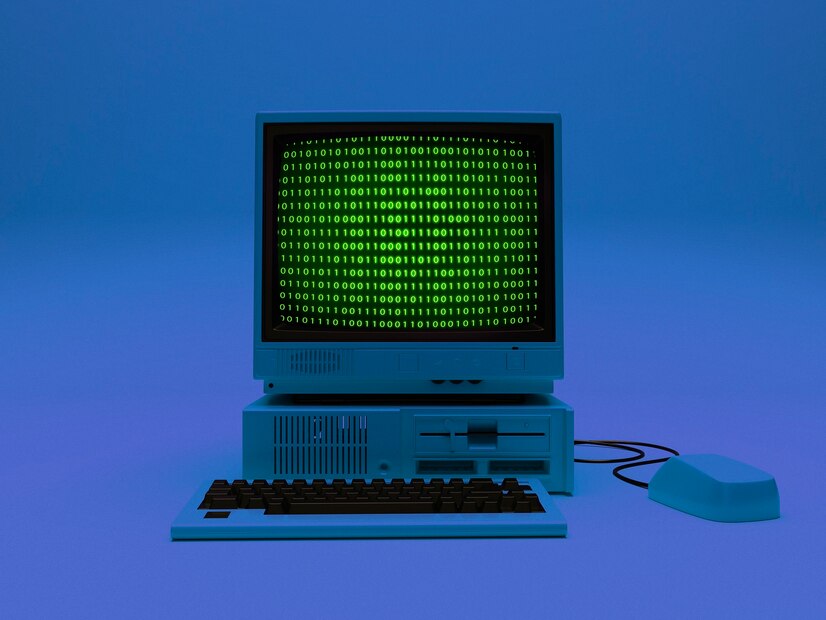The evolution of computing over the last half-century has been nothing short of revolutionary. From the massive mainframes that dominated early data processing to the rise of cloud computing, the progression of technology has transformed how data is stored, processed, and utilized. These changes have not only reshaped industries but also fundamentally altered the way people and businesses interact with technology.
1. The Era of Mainframes (1960s - 1970s)
Mainframe computers, the backbone of early computing, were introduced in the 1960s. These large, powerful machines were capable of processing vast amounts of data, though their size and cost meant they were only accessible to governments, universities, and large corporations. Early mainframes, like IBM’s System/360, required specialized environments, often taking up entire rooms and consuming significant amounts of power. Despite their limitations, mainframes revolutionized business operations, enabling automated accounting, payroll, and inventory management systems.
Throughout the 1970s, advancements in mainframe technology improved processing speed, memory capacity, and data storage. Although still expensive, mainframes became more efficient, laying the groundwork for widespread data processing and centralized computing in large organizations.
2. The Rise of Personal Computing (1980s - 1990s)
The 1980s marked a shift from centralized mainframes to personal computing, with the introduction of affordable and smaller computers like the Apple II and IBM PC. This era democratized computing, making it accessible to individuals and small businesses. Personal computers (PCs) brought word processing, spreadsheets, and early forms of digital communication into homes and offices.
The rise of personal computing also fueled the development of local area networks (LANs), enabling businesses to connect computers within a building, allowing for more efficient data sharing. Software giants like Microsoft and Apple played crucial roles during this period, creating operating systems and applications that transformed PCs into versatile tools for productivity and entertainment.
By the 1990s, personal computing was further bolstered by the rise of the internet. Networking technologies like TCP/IP allowed computers worldwide to connect, setting the stage for the digital revolution. This era saw the beginning of email, e-commerce, and early social media, as well as the development of software applications that could be updated and shared over the web.
3. The Advent of Cloud Computing (2000s - Present)
The 2000s introduced a paradigm shift in computing with the emergence of cloud computing. Unlike traditional computing, where software and data were stored on local servers or personal devices, cloud computing allowed users to store and process data remotely, via the internet. This change reduced the need for expensive hardware and infrastructure, enabling businesses to scale rapidly and pay only for the resources they used.
Cloud computing platforms, like Amazon Web Services (AWS), Microsoft Azure, and Google Cloud, became essential for businesses of all sizes. Cloud services offered flexible storage, enhanced security, and vast computational power, making it easier to handle large datasets, run complex algorithms, and deliver applications globally. For developers, cloud platforms simplified software deployment, allowing applications to be built and scaled without the need for physical servers.
This shift also gave rise to Software as a Service (SaaS), where applications like Google Docs, Salesforce, and Dropbox could be accessed directly from the cloud. Cloud-based services not only increased efficiency but also transformed business models, offering subscription-based access rather than traditional software licenses.
4. The Age of Edge Computing and Hybrid Clouds
As cloud computing became more widespread, new models like edge computing and hybrid clouds began to emerge. Edge computing aims to reduce latency by processing data closer to its source, such as in devices like IoT sensors or autonomous vehicles. This approach is essential for real-time applications where rapid data processing is critical, such as in healthcare, transportation, and industrial automation.
Hybrid cloud computing, which combines private and public cloud environments, allows organizations to leverage the benefits of both worlds. Businesses can maintain sensitive data in private clouds while using public cloud services for less-critical applications, achieving a balance between security, cost, and scalability.
5. The Future of Computing
Looking ahead, the evolution of computing is far from over. Quantum computing, artificial intelligence, and advanced machine learning algorithms are poised to redefine the boundaries of what is possible. Quantum computers promise to solve problems that are currently intractable for classical computers, particularly in areas like cryptography, materials science, and complex system simulations.
At the same time, the continued expansion of cloud computing and AI integration will enhance the ability to analyze vast amounts of data, automate tasks, and create more intelligent applications. As computing power becomes more distributed, with edge devices and cloud systems working in tandem, the future of computing will likely be defined by greater connectivity, speed, and intelligence.

